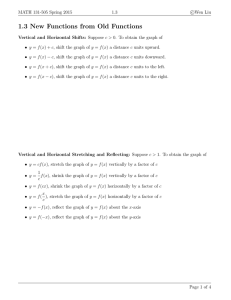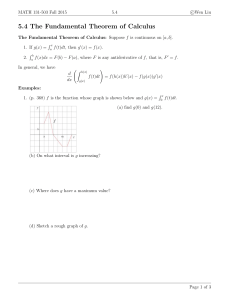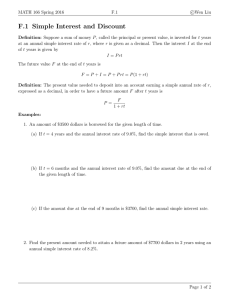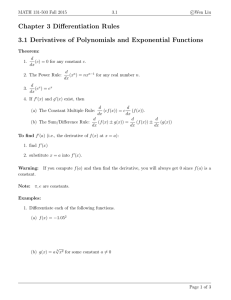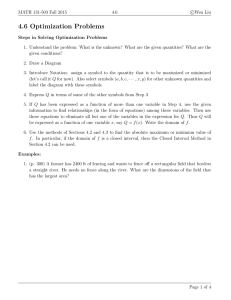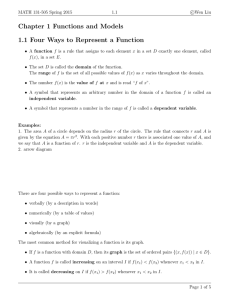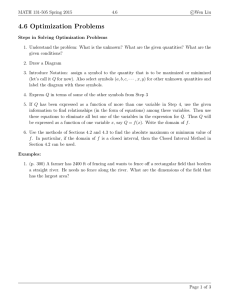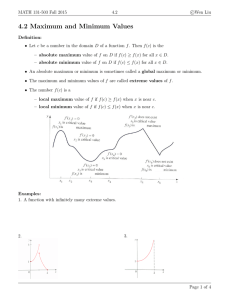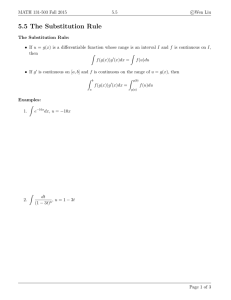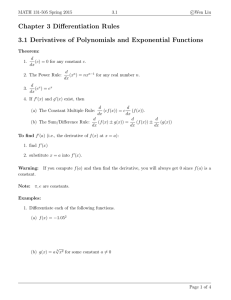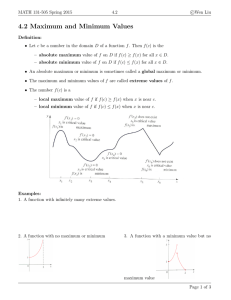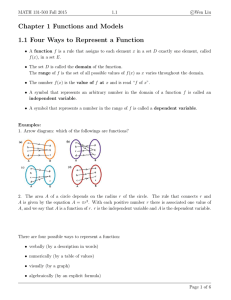Document 10434883
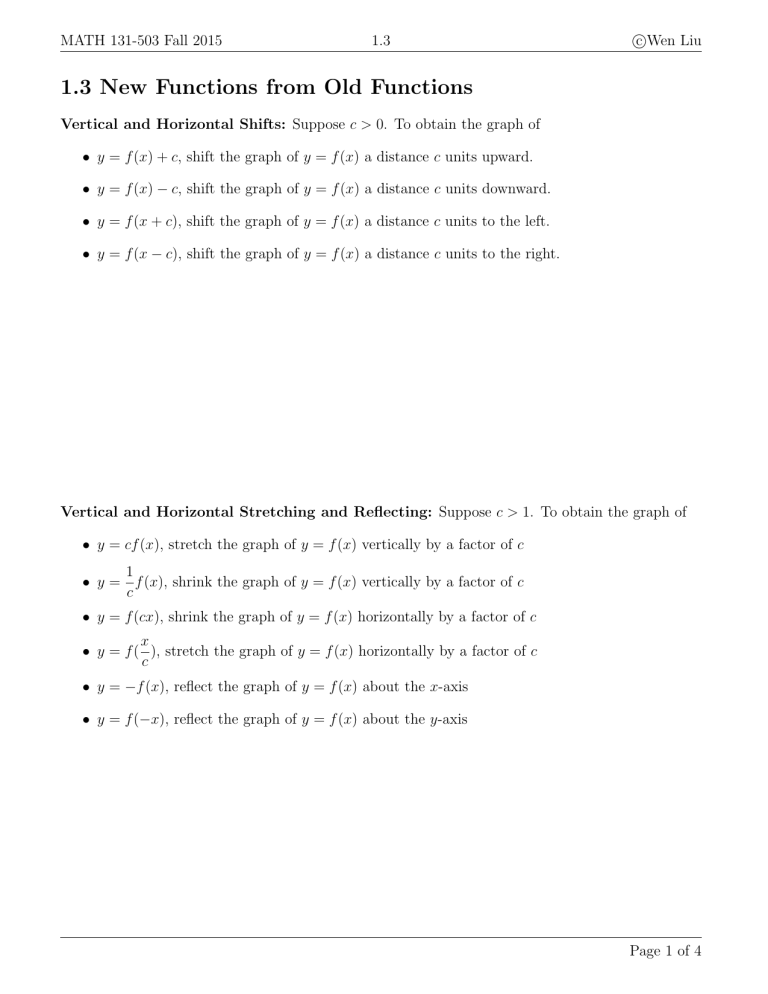
MATH 131-503 Fall 2015 1.3
1.3 New Functions from Old Functions
Vertical and Horizontal Shifts: Suppose c > 0. To obtain the graph of
• y = f ( x ) + c , shift the graph of y = f ( x ) a distance c units upward.
• y = f ( x ) − c , shift the graph of y = f ( x ) a distance c units downward.
• y = f ( x + c ), shift the graph of y = f ( x ) a distance c units to the left.
• y = f ( x − c ), shift the graph of y = f ( x ) a distance c units to the right.
c Wen Liu
Vertical and Horizontal Stretching and Reflecting: Suppose c > 1. To obtain the graph of
• y = cf ( x ), stretch the graph of y = f ( x ) vertically by a factor of c
• y =
1 f ( x ), shrink the graph of y = f ( x ) vertically by a factor of c c
• y = f ( cx ), shrink the graph of y = f ( x ) horizontally by a factor of c
• y = f ( x c
), stretch the graph of y = f ( x ) horizontally by a factor of c
• y = − f ( x ), reflect the graph of y = f ( x ) about the x -axis
• y = f ( − x ), reflect the graph of y = f ( x ) about the y -axis
Page 1 of 4
MATH 131-503 Fall 2015 1.3
c Wen Liu
Note: The order of transformations is important. Perform the transformation in the order you would perform the mathematical calculations for each value of x when determining the resulting y-value.
Examples:
√
Sketch the graphs of the following functions.
1.
y = 5 + 3 x − 2
2.
y = − ( x + 1)
2 − 3
Combinations of Functions
Two functions f and g can be combined to form new functions f + g, f − g, f g, and f /g in a manner similar to the way we add, subtract, multiply, and divide real numbers.
Let the domain of f to be A and the domain of g to be B .
(a) ( f ± g )( x ) = f ( x ) ± g ( x )
The domain of f + g is the intersection A ∩ B because both f ( x ) and g ( x ) have to be defined.
Example 3: (p. 41) Find domains of ( f ± g ) ( x ) for f ( x ) =
√ x and g ( x ) =
√
2 − x .
Page 2 of 4
MATH 131-503 Fall 2015 1.3
f
(b) ( f g )( x ) = f ( x ) g ( x ), g
The domain of f g is A ∩ B .
( x ) = f g (
( x x )
)
The domain of f /g is { x ∈ A ∩ B | g ( x ) = 0 } .
Example 4: (p. 41) Find domains of f g and f /g for f ( x ) = x
2 and g ( x ) = x − 1.
c Wen Liu
Given two functions f and g , the composite function f ◦ g (also called the composition of f and g ) is defined by
( f ◦ g )( x ) = f ( g ( x ))
The domain of f ◦ g is the set of all x in the domain of g such that g ( x ) is in the domain of f . In other words, ( f ◦ g )( x ) is defined whenever both g ( x ) and f ( g ( x )) are defined.
Examples 5: (p. 42) Given f ( x ) =
√ x, g ( x ) =
√
2 − x, and h ( x ) = x 2 . Find each function and its domain.
(a) f ◦ g . Use it to compute f ( g (1)).
(b) g ◦ g . Use it to compute ( g ◦ g )(0)
(c) f ◦ g ◦ h
Page 3 of 4
MATH 131-503 Fall 2015 1.3
c Wen Liu
Decomposing a function: decompose a complicated function into simpler ones, as in the following example.
Examples:
6. Express the function u ( t ) =
√ x 2 + 1 in the form of f ◦ g .
7. If g ( x ) = 2 x + 1 and h ( x ) = 4 x
2
+ 4 x + 7, find a function f such that f ◦ g = h .
8. If f ( x ) = 6 x + 8 and h ( x ) = 6 x
2
+ 6 x + 2, find a function g such that f ◦ g = h .
9. Use the table to evaluate f ( g (1)) and ( g ◦ f )(3).
x 1 2 3 4 5 6 f ( x ) 1 1 5 4 1 2 g ( x ) 6 5 3 3 6 4
Page 4 of 4
